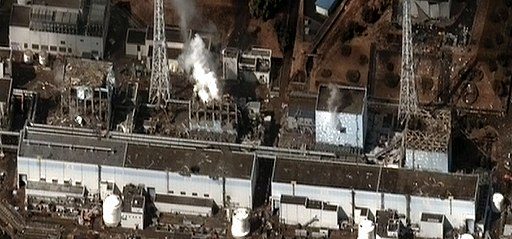
Unmanned Aerial Technology: Fukushima Drone Survey a Game-Changer in Assessing Damage and Accelerating Cleanup at Nuclear Disaster Site
13 years ago, one of the worst nuclear disasters in history occurred when a record-breaking earthquake and following tsunami resulted in flooding – and subsequent nuclear meltdown – at the Fukushima Daiichi nuclear power plant in Japan. In the days that followed, there were heroic stories of plant retirees volunteering to go in to the plant to help minimize the danger to others. Since then, the Tokyo Electric Power Company Holdings (TEPCO) has been steadily engaged in efforts to safely decommission the plant.
Applications like the Fukishima drone survey represent the ultimate purpose of uncrewed systems: to perform the dark, dirty, and dangerous jobs and to keep human personnel out of harms way. TEPCO announced recently that they have completed testing of the first drones to be deployed to the Fukushima Daiichi plant as part of its decades-long decommissioning process.
The drones will be deployed alongside a snake-shaped robot in February of 2024, in order to survey the damage at the Unit 1 reactor. The deployment will be the first time that a drone will enter the reactor to provide an understanding of the damage above water, World Energy reports.
While the process of removing molten fuel from the site will take decades, drones may help by providing data from parts of the reactors that were previously inaccessible. Experts have attempted to use drones in the space previously, but extreme levels of radiation, debris and cluttered environments have made them impractical.
The new drones that TEPCO plans to deploy in February are “the size of a slice of bread,” the Associated Press reports. These drones were demonstrated at the Japan Atomic Energy Agency’s mockup facility in Naraha.
Read more:
- Groundbreaking Drone Flights with Radiation Detection Pave the Way for Improved Safety on Nuclear Sites
- For the Dark, Dirty and Dangerous, Flyability Elios 3 LiDAR Drone: Check Out this Fly Through a Decommissioned Nuclear Plant
- Azur’s Skeyetech DIZI Recognized as a Major Innovation in Drones for Nuclear Sites at WNE

Miriam McNabb is the Editor-in-Chief of DRONELIFE and CEO of JobForDrones, a professional drone services marketplace, and a fascinated observer of the emerging drone industry and the regulatory environment for drones. Miriam has penned over 3,000 articles focused on the commercial drone space and is an international speaker and recognized figure in the industry. Miriam has a degree from the University of Chicago and over 20 years of experience in high tech sales and marketing for new technologies.
For drone industry consulting or writing, Email Miriam.
TWITTER:@spaldingbarker
Subscribe to DroneLife here.







[…] Supply hyperlink […]